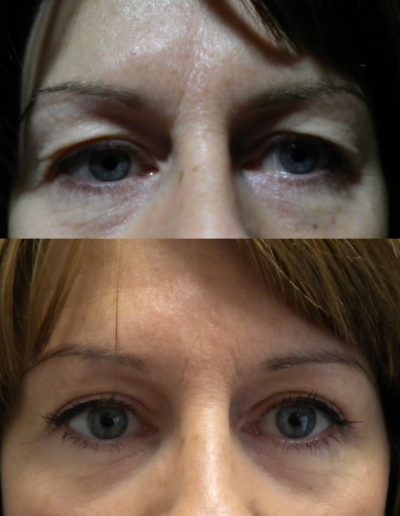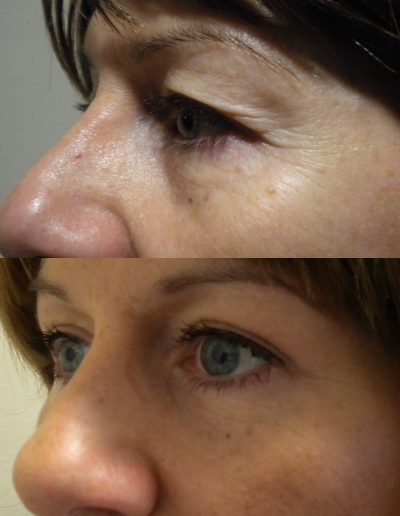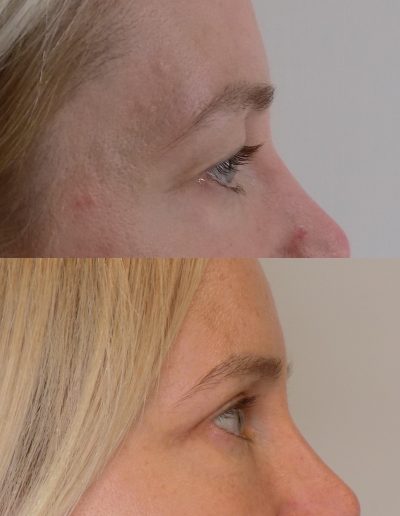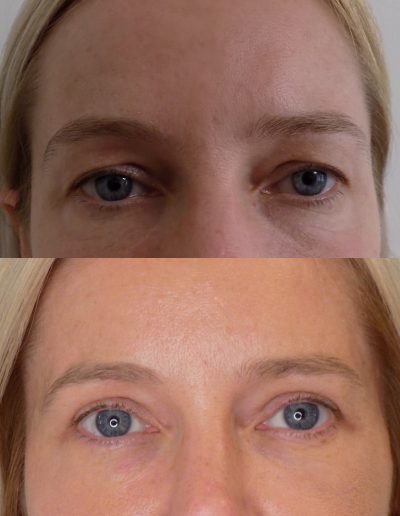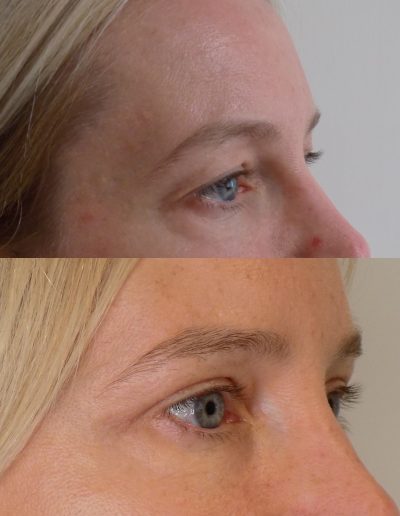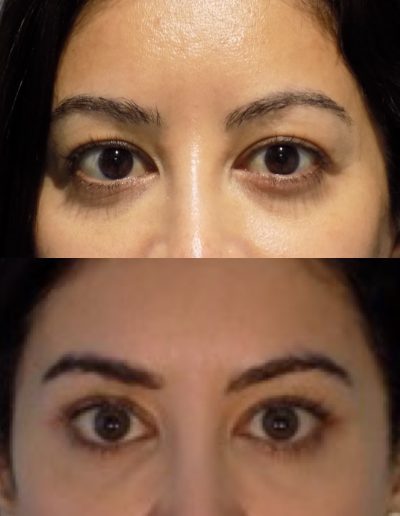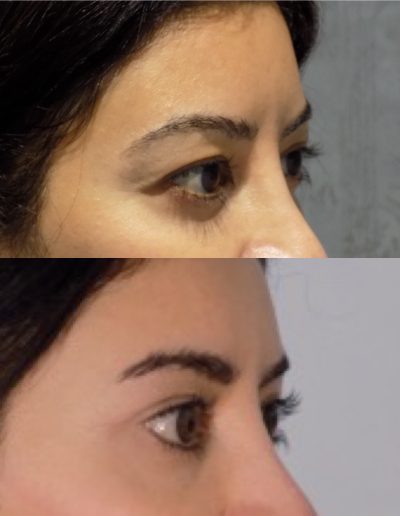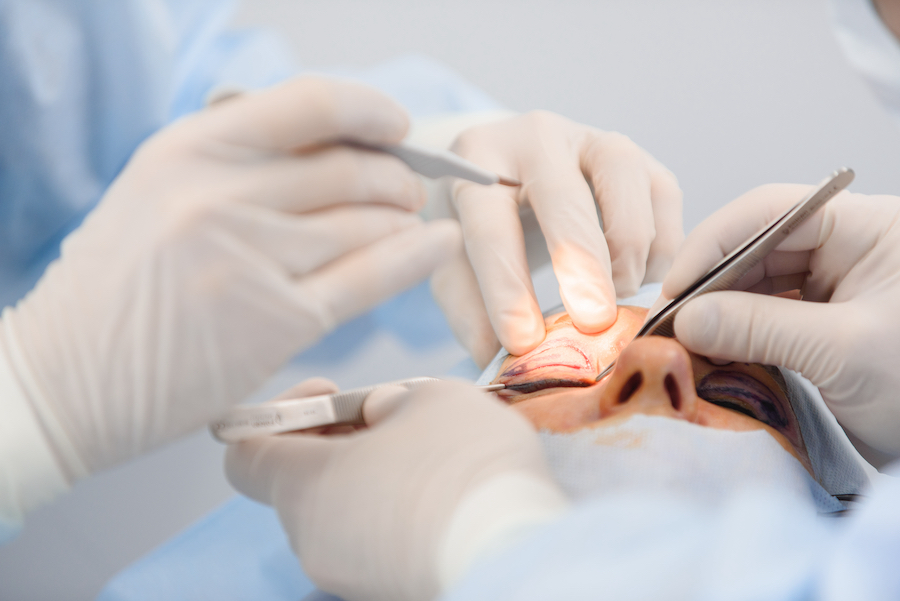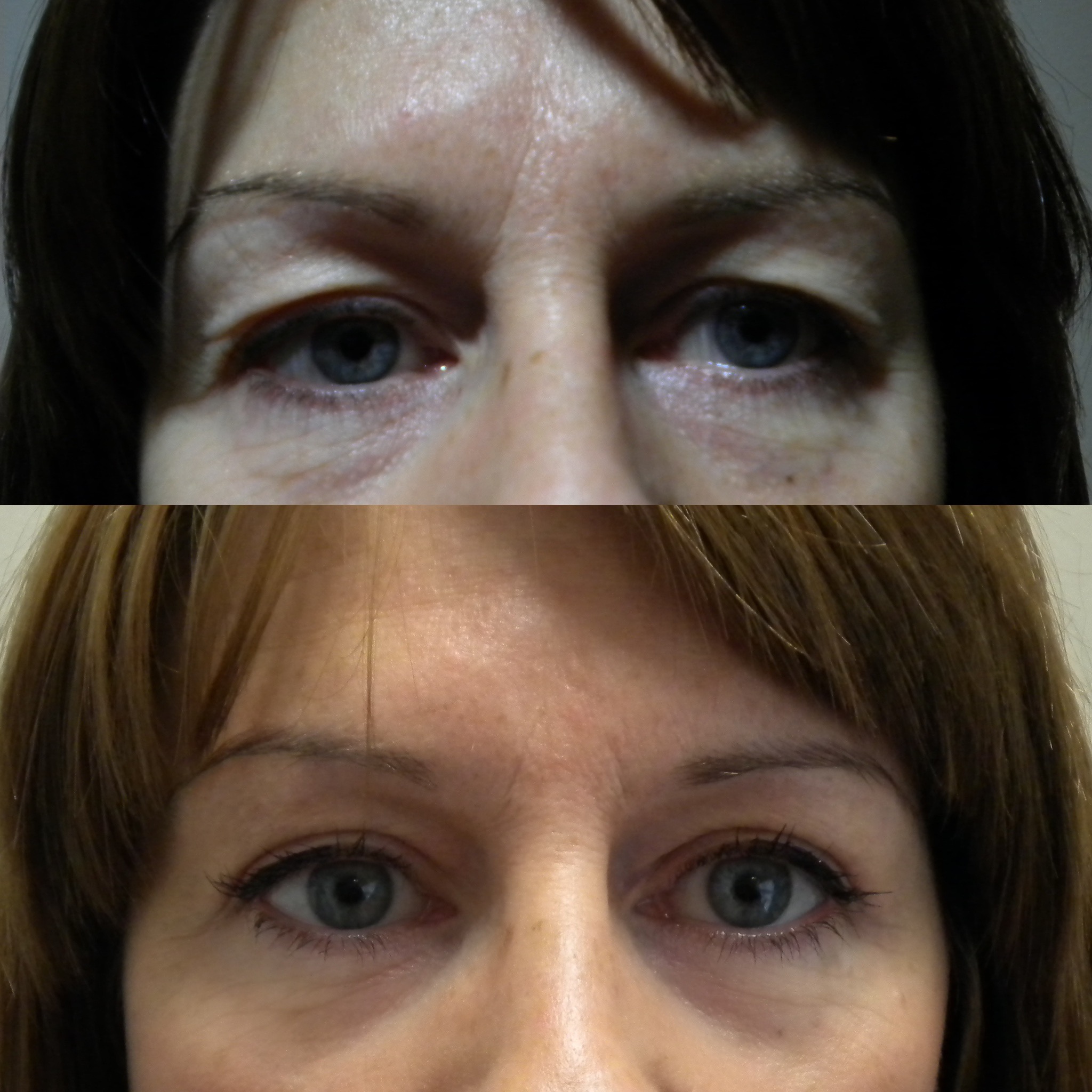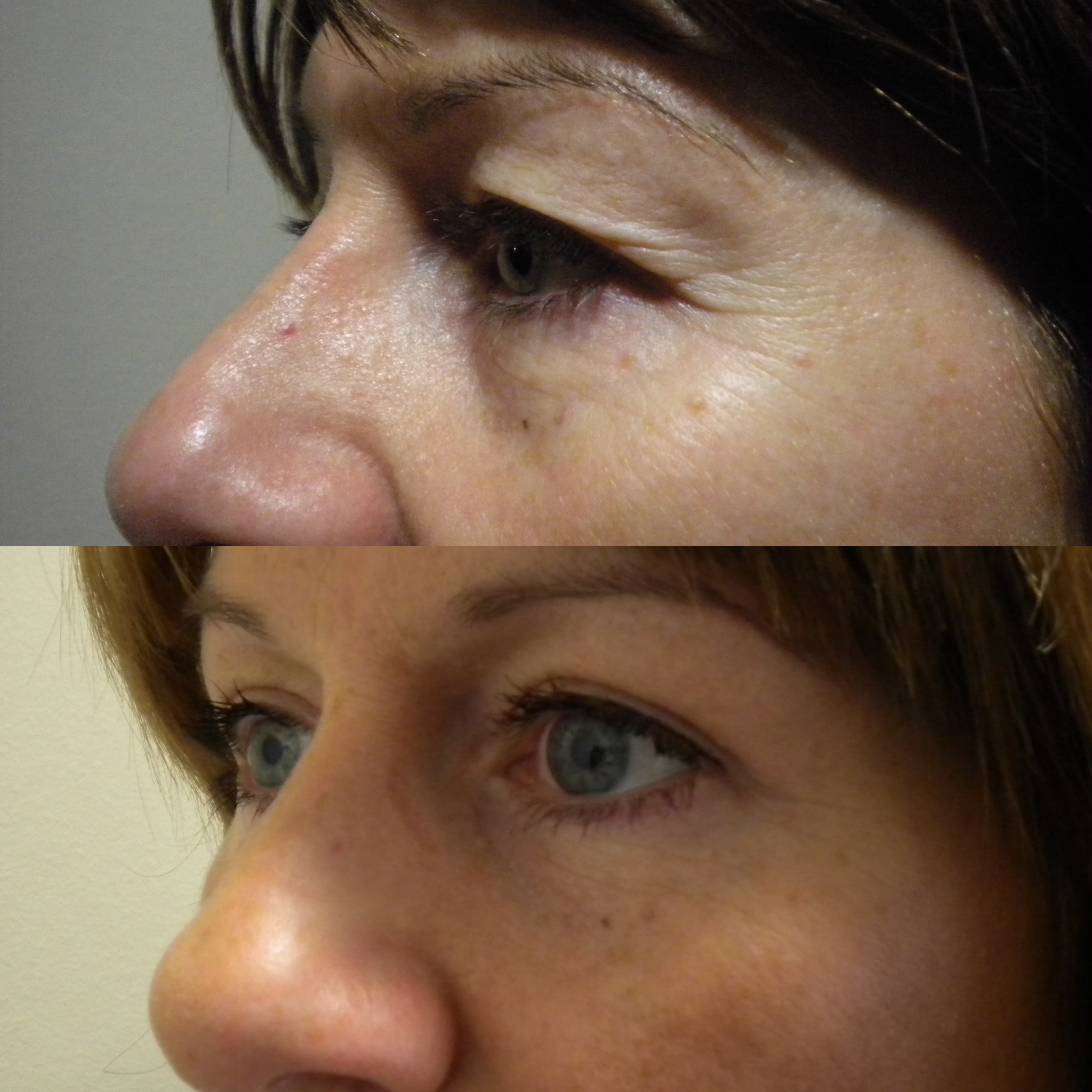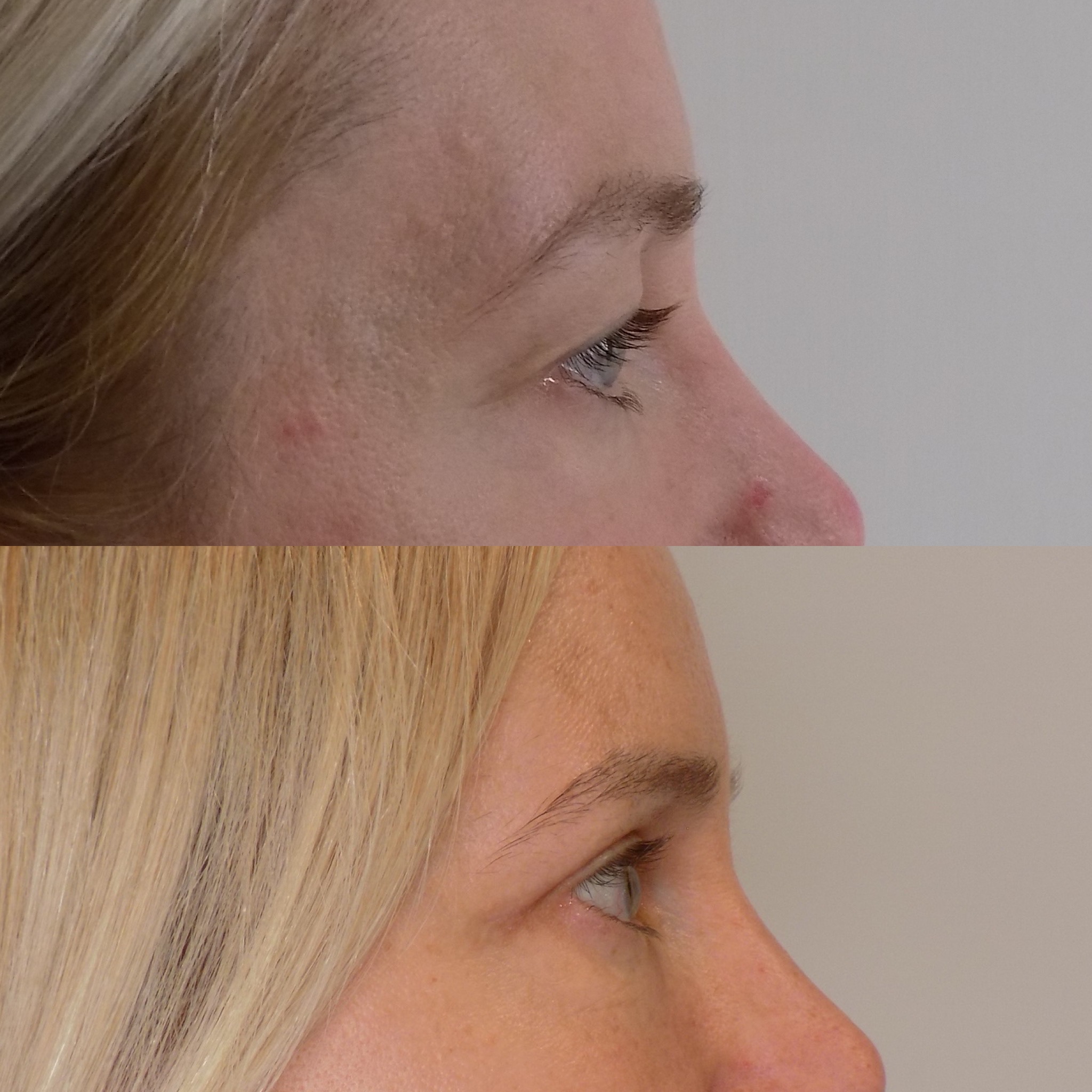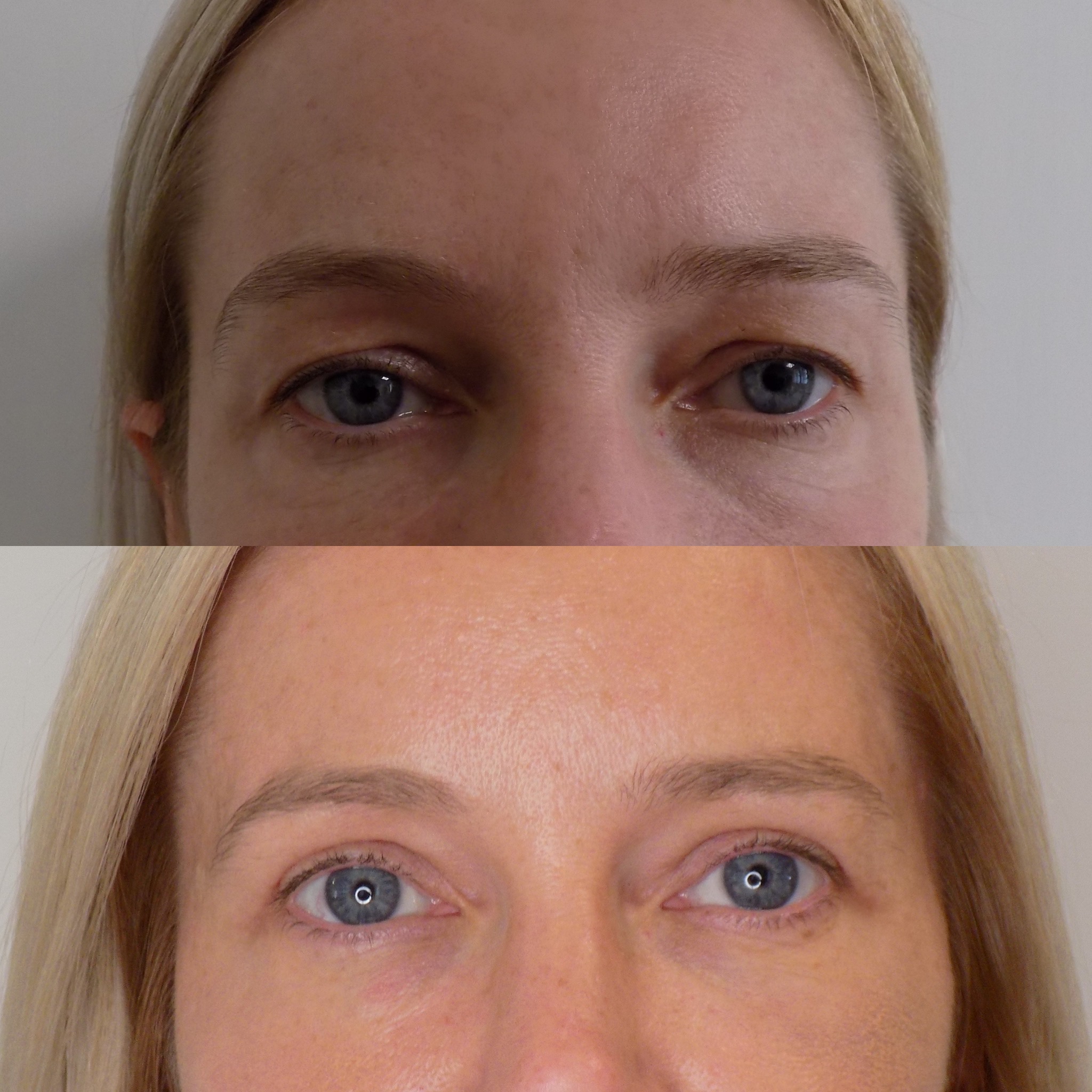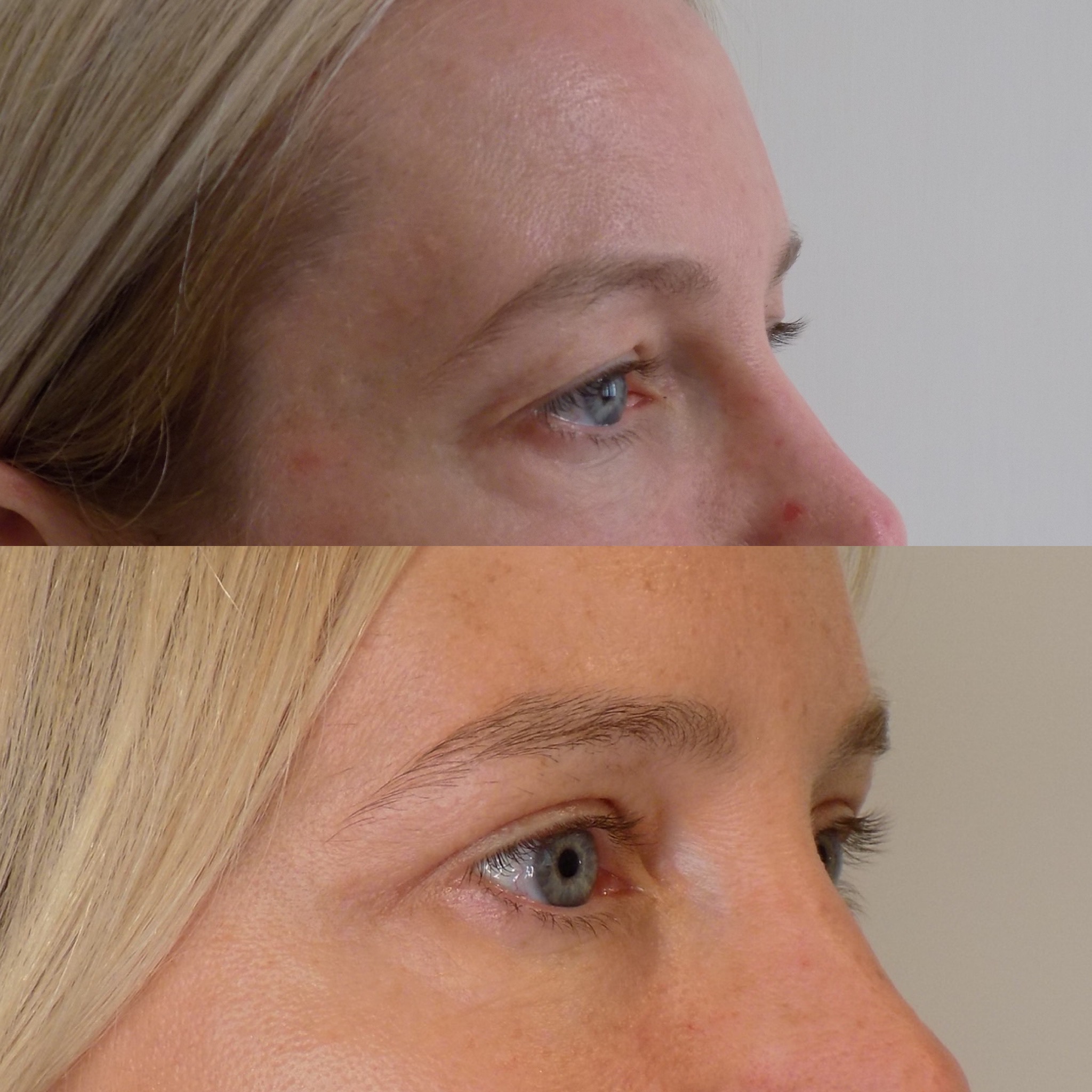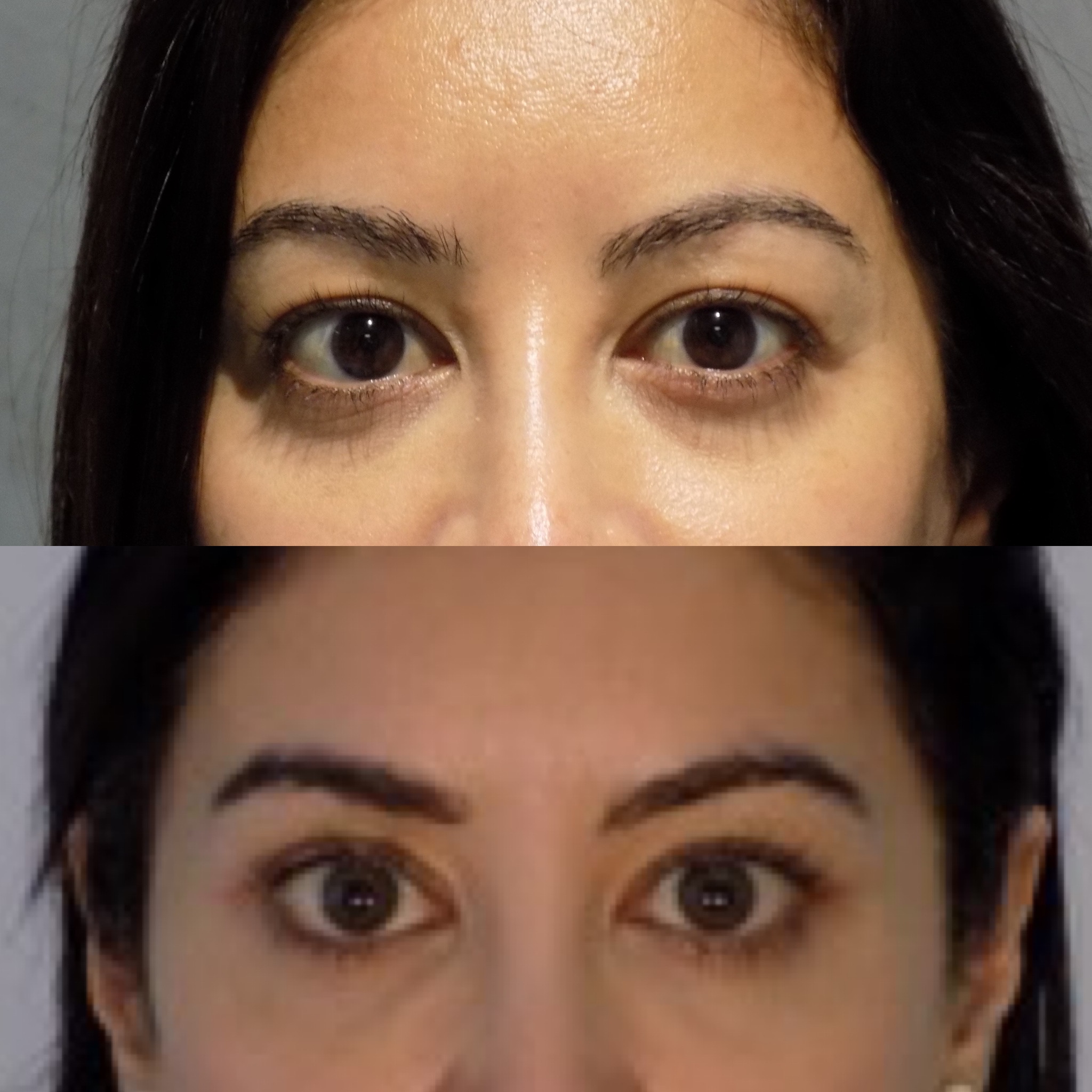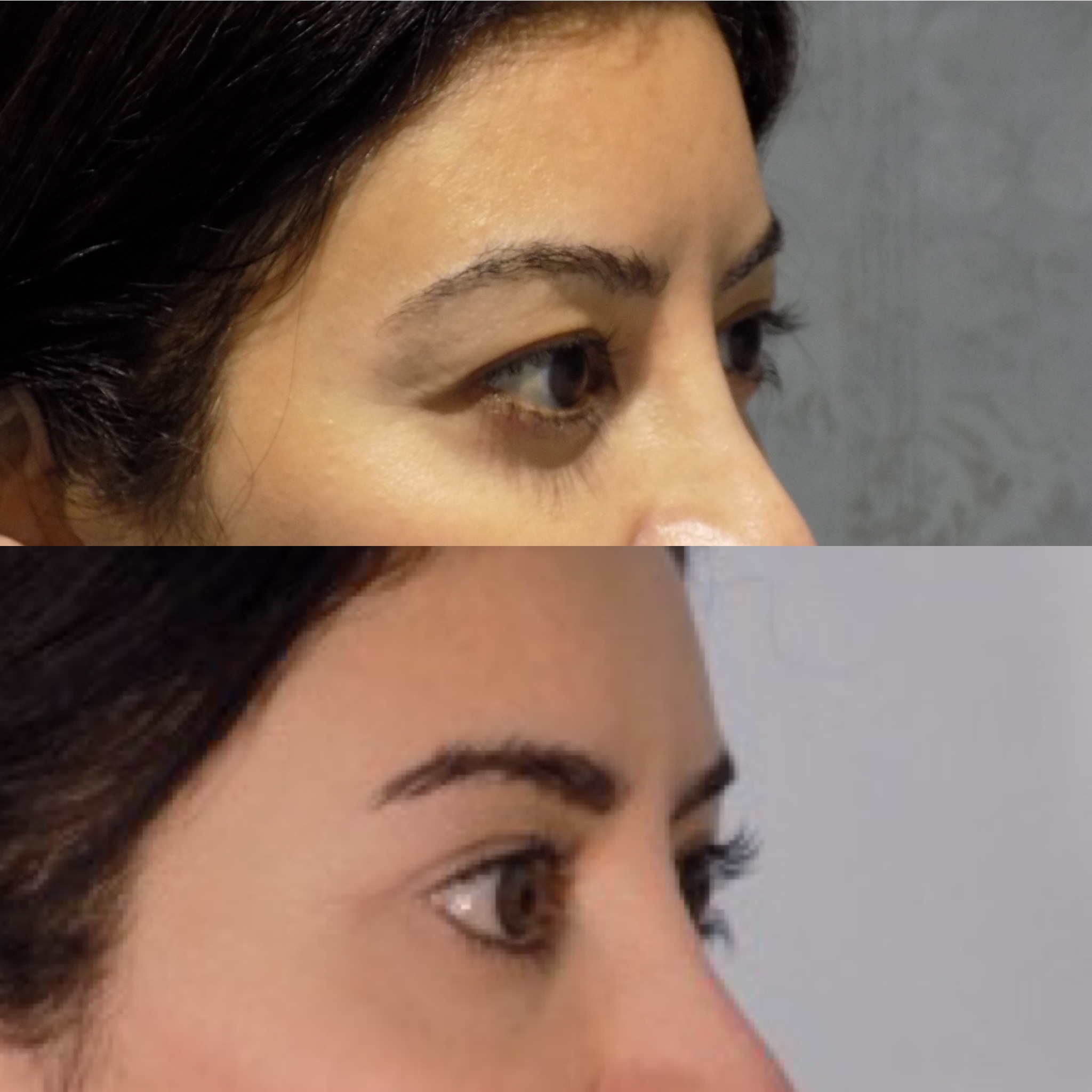
Face Procedures
Blepharoplasty (Eyelid Surgery)
10 Harley Street
London W1G 9PF
Blepharoplasty (Eyelid Surgery)
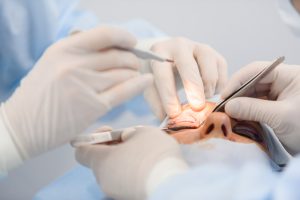
It can be performed under local anaesthetic, deep sedation or under general anaesthetic. Patients can go home on the same day (day-surgery).
Eyelid surgery is one of the most popular facial procedures for men and women. It can be performed on the upper or lower eyelids; however, most patients choose to have surgery on both for a more balanced correction. Eyelid surgery creates a more youthful and open look to the eyes by reducing fat pads (so called eye-bags) and puffiness below the eyes and loose skin above the eyes.
Scars
Incisions for a blepharoplasty are made in the natural crease of the upper lid, which disguises the final thin scar so that one would have to look very closely in the mirror to determine where an incision had been made, if one can see it at all.
In the lower lid, the skin incision is made as close as possible beneath the lash line, and many times extends past the corner of the eye for several millimeters if needed.
With an internal (transconjunctival) approach, there is no incision at all on the skin of the lower eyelid, as the incision is placed on the conjunctiva, that is, the inner lining of the lower lid.
The only area of the incision that may be noticeable for a period of time is the outside corner of the eye, in the laugh line area.
It is important to understand the natural history of healing and scar formation. Tissue glue (fibrin) causes enough healing within a week or ten days such that the incision is strong enough and the stitches can be removed at that time.
The incision lines, however, then begin to “knit”. This process includes the ingrowth of many small blood vessels, extracellular material, and others cells that go into those areas to strengthen the scar tissue.
During this period of “knitting” (approx. 6 – 8 weeks), the incision lines will become tight, firm, and reddened, which is the body’s (inflammatory) response to any cut or incision. This process may not be noticeable to other people but may be noticeable to the patient. When the body finally recognizes the fact that the tissues are healed enough to suit its purpose (8 -12 weeks), the extra blood vessels and cellular material will leave and the incision lines will soften, bleach and then fade. The maximum relaxation occurs in about 4 -6 months.
During this period of time, it is extremely important to avoid exposure to the sun, as this may aggravate and the intensify the activity (inflammatory response) in the incision line.
Stitches
The stitches used are usually very fine nylon or silk sutures, which are removed in 6 – 8 days. Immediately after removal of stitches, no creams or cosmetics should be used, to avoid tiny (milia) cysts that may form along the scar line.
Bruising and swelling
There is great variation among individuals with regards to bruising and swelling. It is very rare for a person to get no bruising or swelling at all. Most patients will have a puffy and purplish appearance to the eyelids. With the ‘standard amount’ of bruising and swelling usually seen, most patients are presentable for public appearances (with make-up) in 12 – 14 days.
It is very important for patients to avoid aspirin-like medication and blood thinners for 4 weeks before and after surgery.
Blood pressure should also be kept under control.
In order to reduce post-operative bruising and swelling we recommend head elevation and ice compresses continuously for the first 48 hours after surgery and as much as possible thereafter.
Eye lubrication and blurred vision
In order to maintain the health of the eye, it is important to prevent ‘dry spots’ that can occur after surgery. Because there will be some ‘tightness’ of the eyelids following surgery, we require all patients to apply lubricants in the eyes, particularly at night time. Immediately after surgery we prefer ointments (which are far more effective than drops) in preventing symptoms of dryness. Lubricating ointments typically blur the vision.
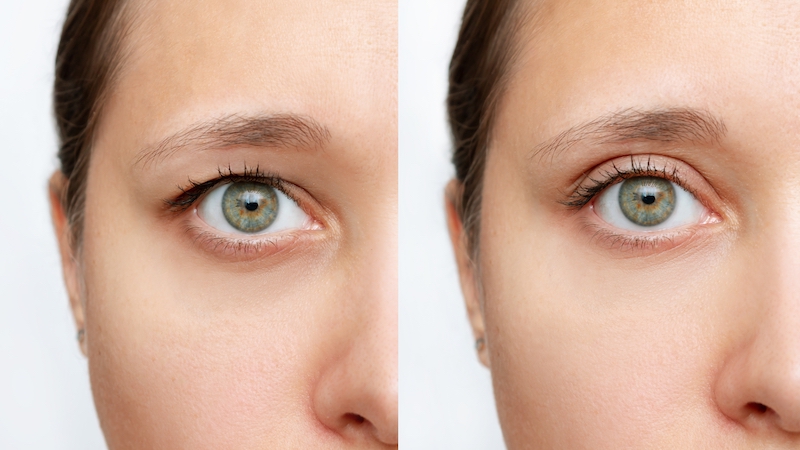
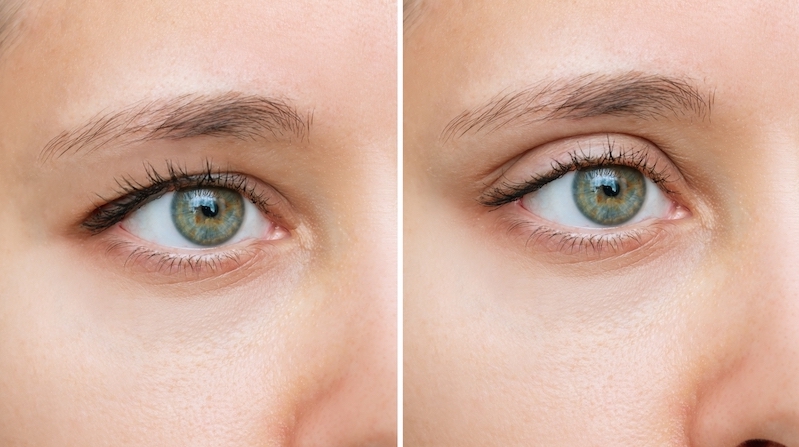
Before and After Results
To book a consultation call 07943 277 215 or email clinic@lindafiumara.com
Face Procedures
Blepharoplasty (Eyelid Surgery)
Blepharoplasty
(Eyelid Surgery)
Blepharoplasty is a surgical procedure that involves reshaping the eyelids, in order to improve their appearance and or function. It addresses issues such as excess/sagging skin, eye bags (excess fat) or dropping eyelids.
It can be performed under local anaesthetic, deep sedation or under general anaesthetic. Patients can go home on the same day (day-surgery).
Eyelid surgery is one of the most popular facial procedures for men and women. It can be performed on the upper or lower eyelids; however, most patients choose to have surgery on both for a more balanced correction. Eyelid surgery creates a more youthful and open look to the eyes by reducing fat pads (so called eye-bags) and puffiness below the eyes and loose skin above the eyes.
Scars
Incisions for a blepharoplasty are made in the natural crease of the upper lid, which disguises the final thin scar so that one would have to look very closely in the mirror to determine where an incision had been made, if one can see it at all.
In the lower lid, the skin incision is made as close as possible beneath the lash line, and many times extends past the corner of the eye for several millimeters if needed.
With an internal (transconjunctival) approach, there is no incision at all on the skin of the lower eyelid, as the incision is placed on the conjunctiva, that is, the inner lining of the lower lid.
The only area of the incision that may be noticeable for a period of time is the outside corner of the eye, in the laugh line area.
It is important to understand the natural history of healing and scar formation. Tissue glue (fibrin) causes enough healing within a week or ten days such that the incision is strong enough and the stitches can be removed at that time.
The incision lines, however, then begin to “knit”. This process includes the ingrowth of many small blood vessels, extracellular material, and others cells that go into those areas to strengthen the scar tissue.
During this period of “knitting” (approx. 6 – 8 weeks), the incision lines will become tight, firm, and reddened, which is the body’s (inflammatory) response to any cut or incision. This process may not be noticeable to other people but may be noticeable to the patient. When the body finally recognizes the fact that the tissues are healed enough to suit its purpose (8 -12 weeks), the extra blood vessels and cellular material will leave and the incision lines will soften, bleach and then fade. The maximum relaxation occurs in about 4 -6 months.
During this period of time, it is extremely important to avoid exposure to the sun, as this may aggravate and the intensify the activity (inflammatory response) in the incision line.
Stitches
The stitches used are usually very fine nylon or silk sutures, which are removed in 6 – 8 days. Immediately after removal of stitches, no creams or cosmetics should be used, to avoid tiny (milia) cysts that may form along the scar line.
Bruising and swelling
There is great variation among individuals with regards to bruising and swelling. It is very rare for a person to get no bruising or swelling at all. Most patients will have a puffy and purplish appearance to the eyelids. With the ‘standard amount’ of bruising and swelling usually seen, most patients are presentable for public appearances (with make-up) in 12 – 14 days.
It is very important for patients to avoid aspirin-like medication and blood thinners for 4 weeks before and after surgery.
Blood pressure should also be kept under control.
In order to reduce post-operative bruising and swelling we recommend head elevation and ice compresses continuously for the first 48 hours after surgery and as much as possible thereafter.
Eye lubrication and blurred vision
In order to maintain the health of the eye, it is important to prevent ‘dry spots’ that can occur after surgery. Because there will be some ‘tightness’ of the eyelids following surgery, we require all patients to apply lubricants in the eyes, particularly at night time. Immediately after surgery we prefer ointments (which are far more effective than drops) in preventing symptoms of dryness. Lubricating ointments typically blur the vision.


Before and After Results
As featured in The Evening Standard and The Telegraph –





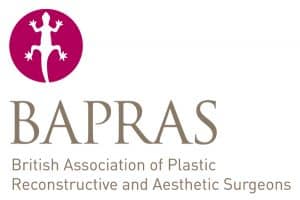




Copyright © 2023 Dr Linda Fiumara MD
Designed by Createch
